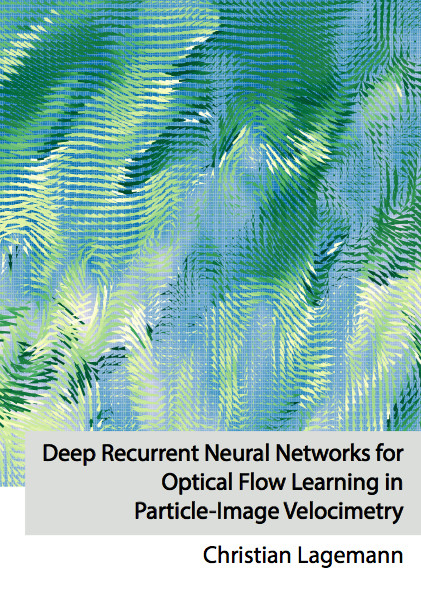
Deep Recurrent Neural Networks for Optical Flow Learning in Particle-Image Velocimetry
Seiten
2022
Dr. Hut (Verlag)
9783843951425 (ISBN)
Dr. Hut (Verlag)
9783843951425 (ISBN)
- Keine Verlagsinformationen verfügbar
- Artikel merken
A wide range of problems in applied physics and engineering involve learning physical displacement fields from data. In this thesis, a novel deep neural network based approach for learning displacement fields in an end-to-end manner is introduced, focusing on the specific case of Particle-Image Velocimetry (PIV). PIV is a key approach in experimental fluid dynamics and of fundamental importance in diverse applications. The current state-of-the-art in PIV data processing involves traditional handcrafted models which are subject to limitations including the high manual effort required and difficulties in generalizing across conditions. Although widely used, these existing tools have a number of well-known shortcomings, including limited spatial output resolution and peak-locking biases. In contrast, the deep learning-based approach introduced in this work, is general, largely automated, and provides high spatial resolution. Extensive experiments demonstrate that the proposed approach achieves state-of-the-art accuracy and generalization to new data, relative to both classical approaches and previously proposed optical flow learning schemes.
While the RAFT-PIV method is a promising approach, it is important for the broader fluids community to understand more completely its empirical behaviour, performance, shortcomings, and advantages in more detail. To this end, in this study, the performance of RAFT-PIV under varying image and lighting conditions is investigated thoroughly. Various applications spanning synthetic and experimental data, with a breadth and depth going far beyond currently available empirical results, are considered to demonstrate the robustness and generalization ability. The results for the wide variation of experiments shed new light on the capabilities of deep learning for PIV processing and more importantly, evidence that the proposed neural optical flow predictor can serve as a direct substitute to existing handcrafted PIV algorithms.
While the RAFT-PIV method is a promising approach, it is important for the broader fluids community to understand more completely its empirical behaviour, performance, shortcomings, and advantages in more detail. To this end, in this study, the performance of RAFT-PIV under varying image and lighting conditions is investigated thoroughly. Various applications spanning synthetic and experimental data, with a breadth and depth going far beyond currently available empirical results, are considered to demonstrate the robustness and generalization ability. The results for the wide variation of experiments shed new light on the capabilities of deep learning for PIV processing and more importantly, evidence that the proposed neural optical flow predictor can serve as a direct substitute to existing handcrafted PIV algorithms.
| Erscheinungsdatum | 18.10.2022 |
|---|---|
| Reihe/Serie | Strömungsmechanik |
| Verlagsort | München |
| Sprache | englisch |
| Maße | 148 x 210 mm |
| Gewicht | 261 g |
| Themenwelt | Naturwissenschaften ► Physik / Astronomie ► Strömungsmechanik |
| Technik | |
| Schlagworte | Deep learning • optical flow • Particle-Image Velocimetry |
| ISBN-13 | 9783843951425 / 9783843951425 |
| Zustand | Neuware |
| Informationen gemäß Produktsicherheitsverordnung (GPSR) | |
| Haben Sie eine Frage zum Produkt? |
Mehr entdecken
aus dem Bereich
aus dem Bereich
Buch | Hardcover (2022)
Springer Vieweg (Verlag)
CHF 759,95


